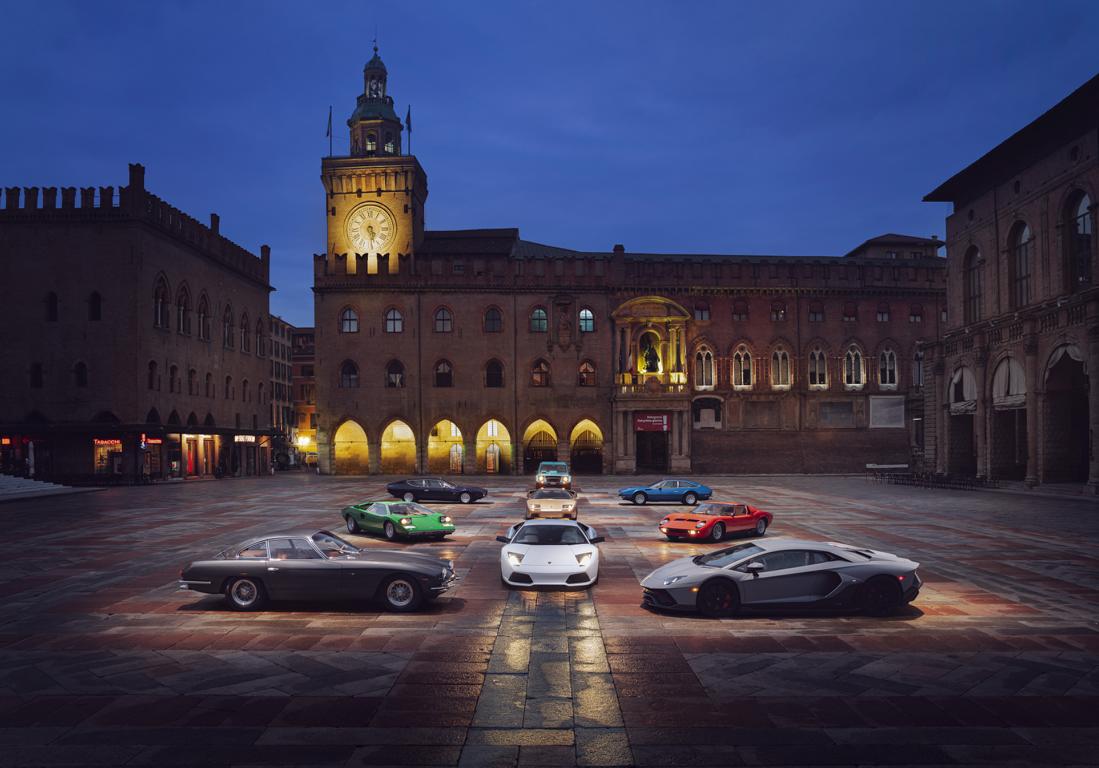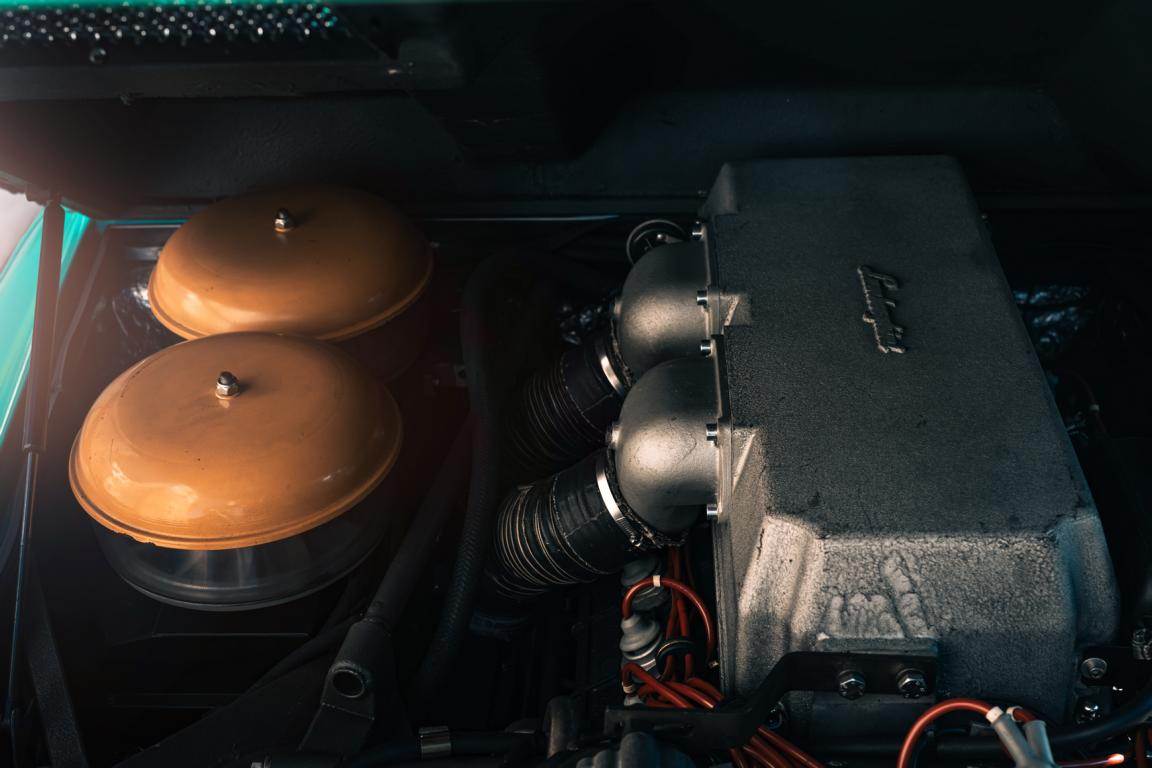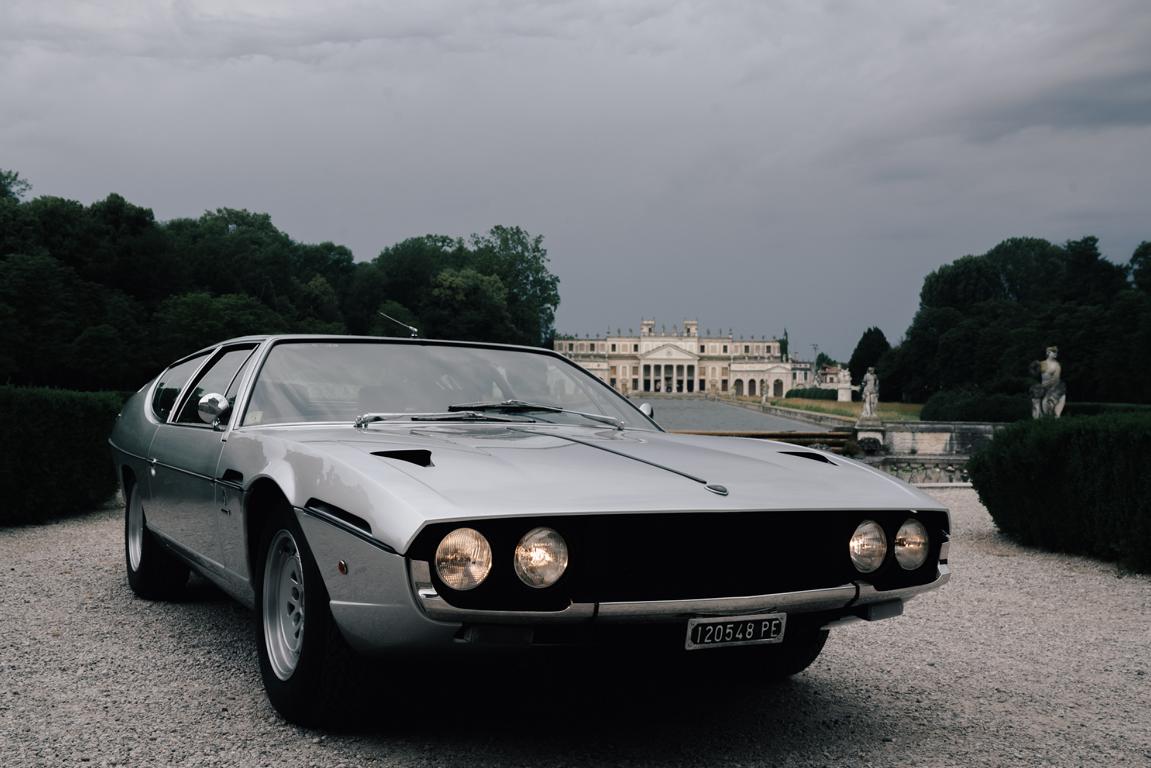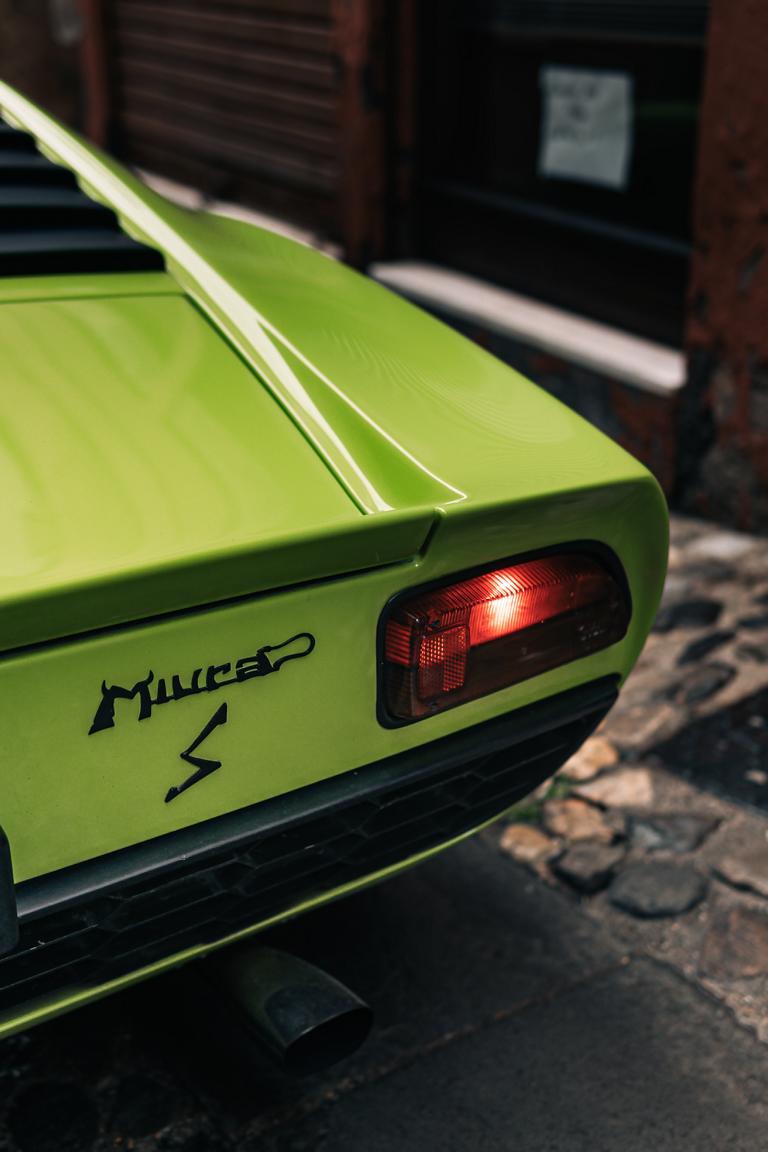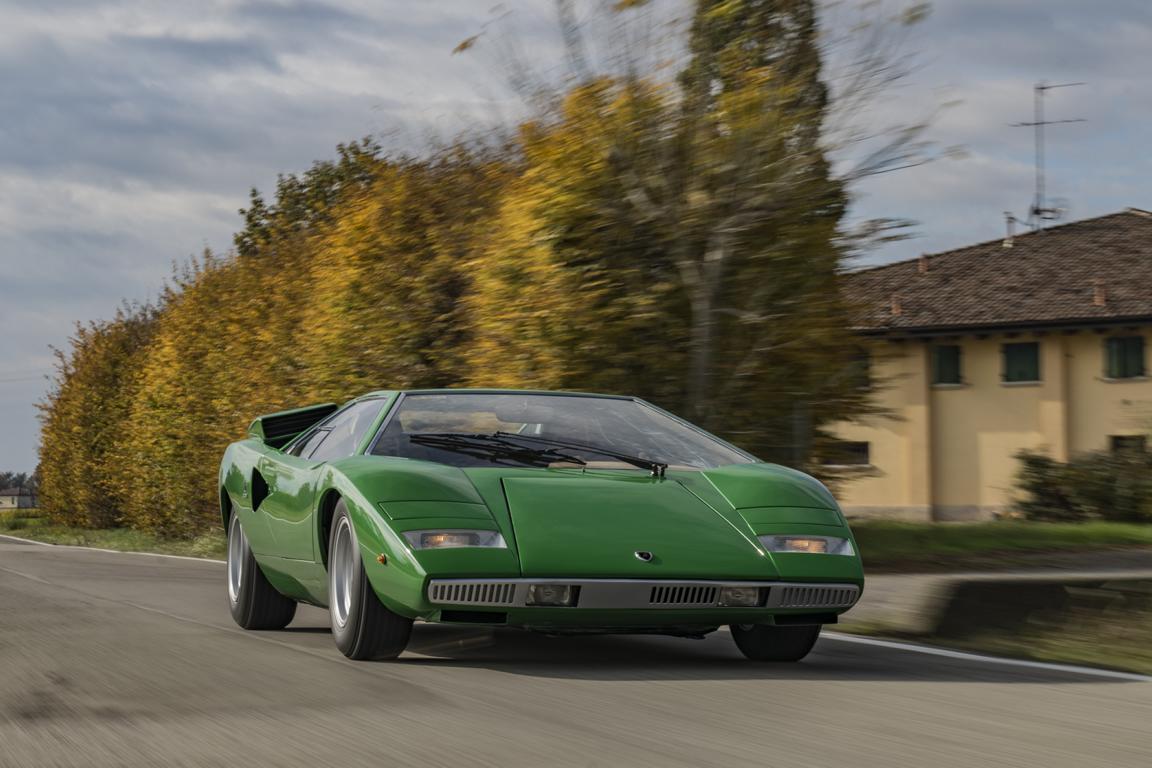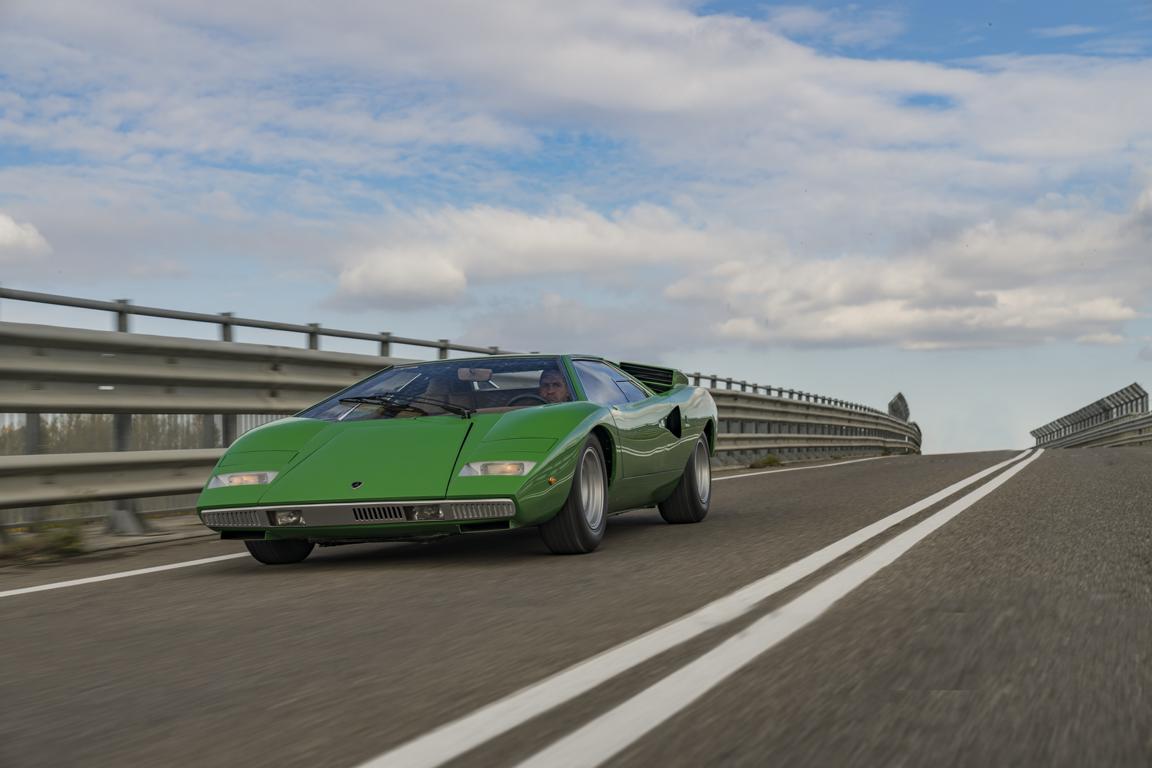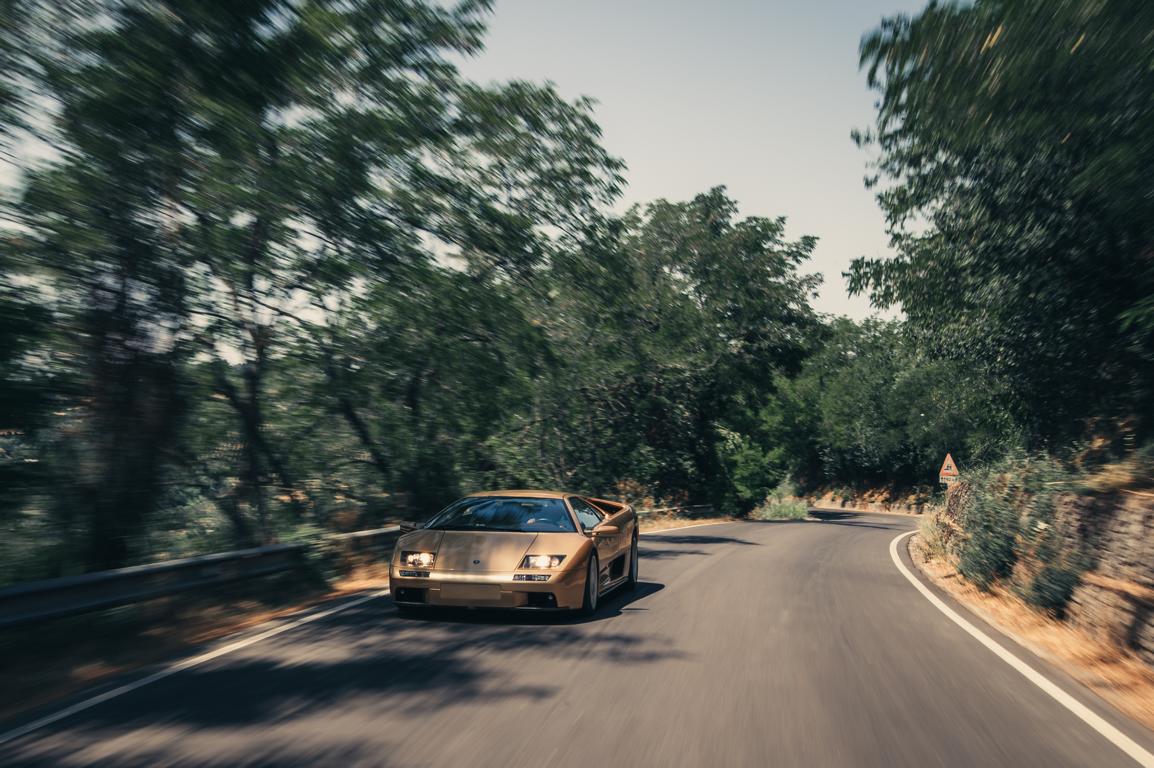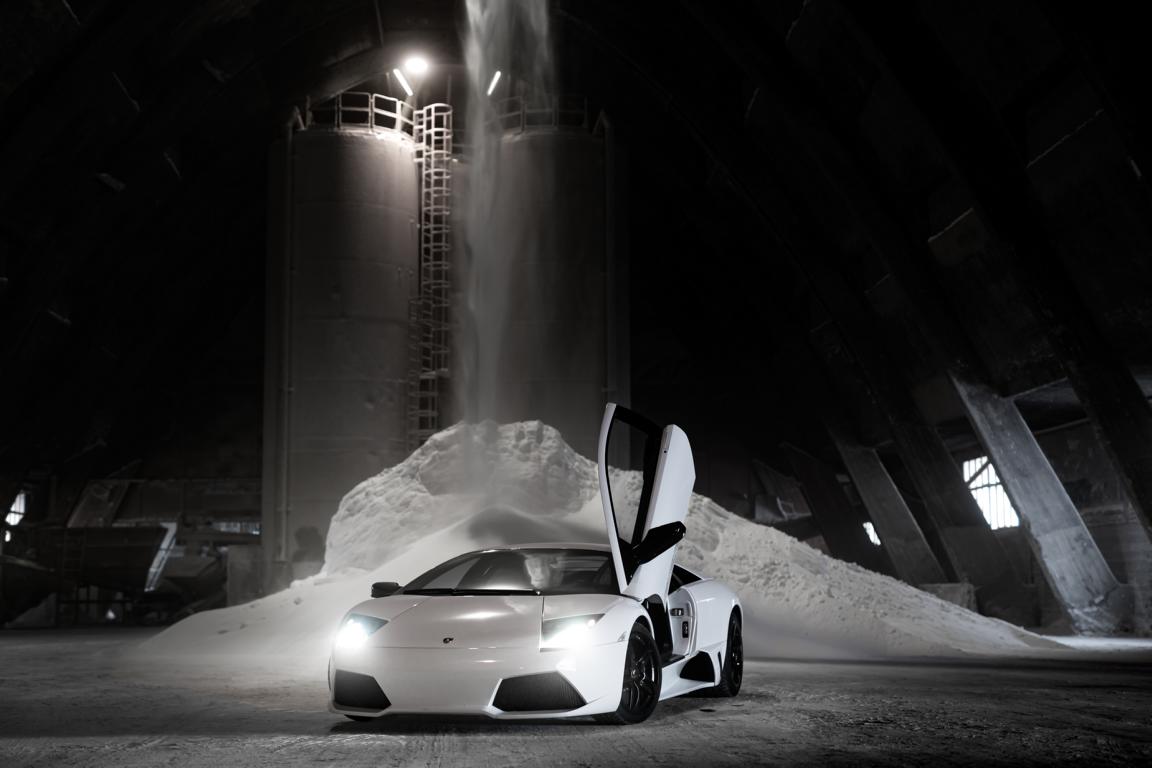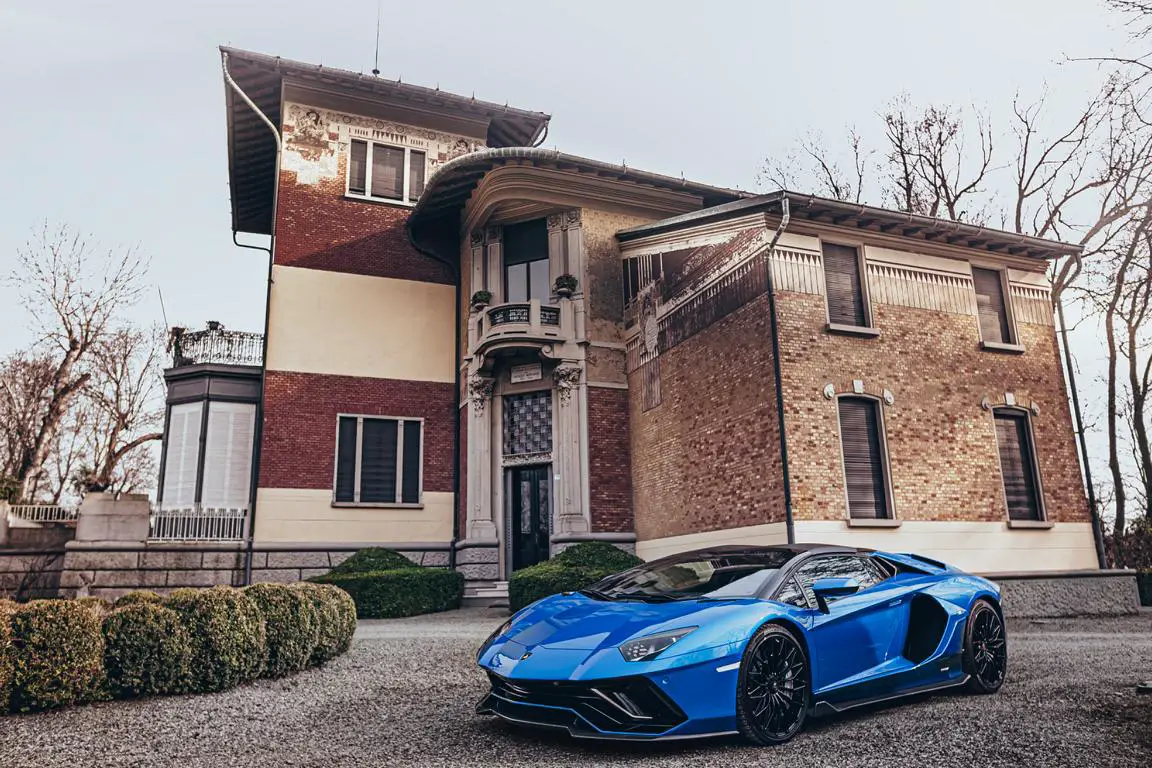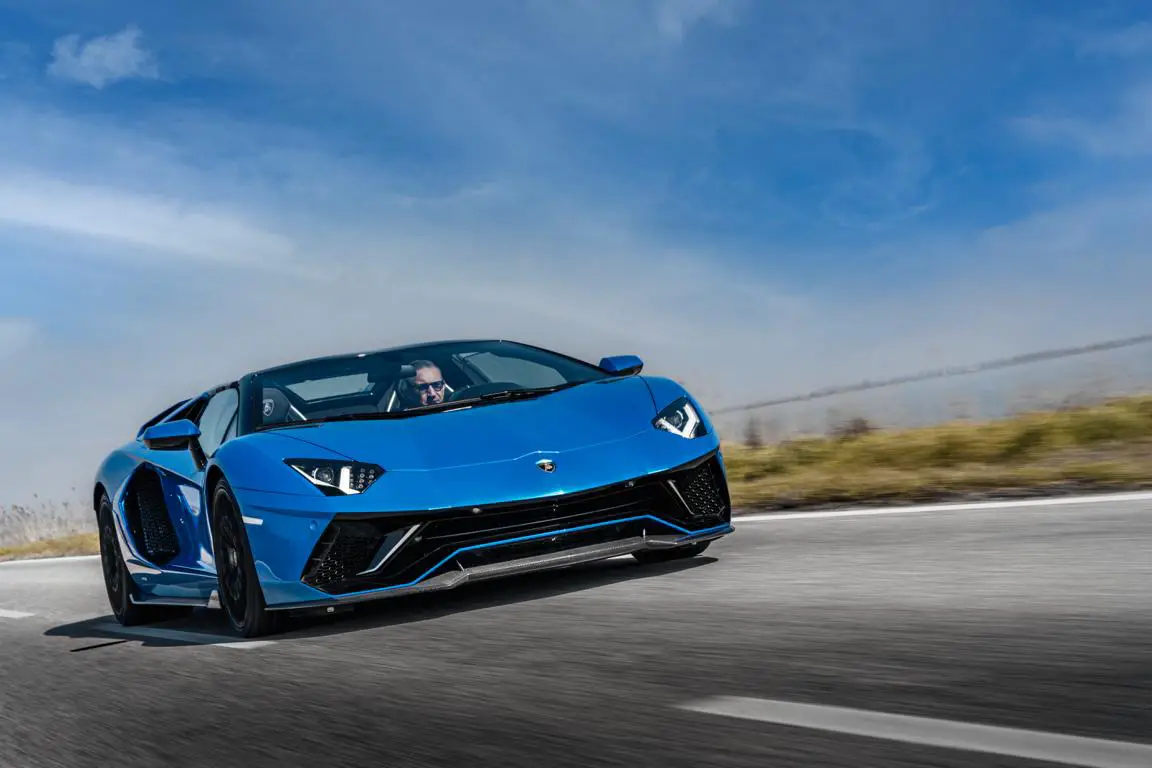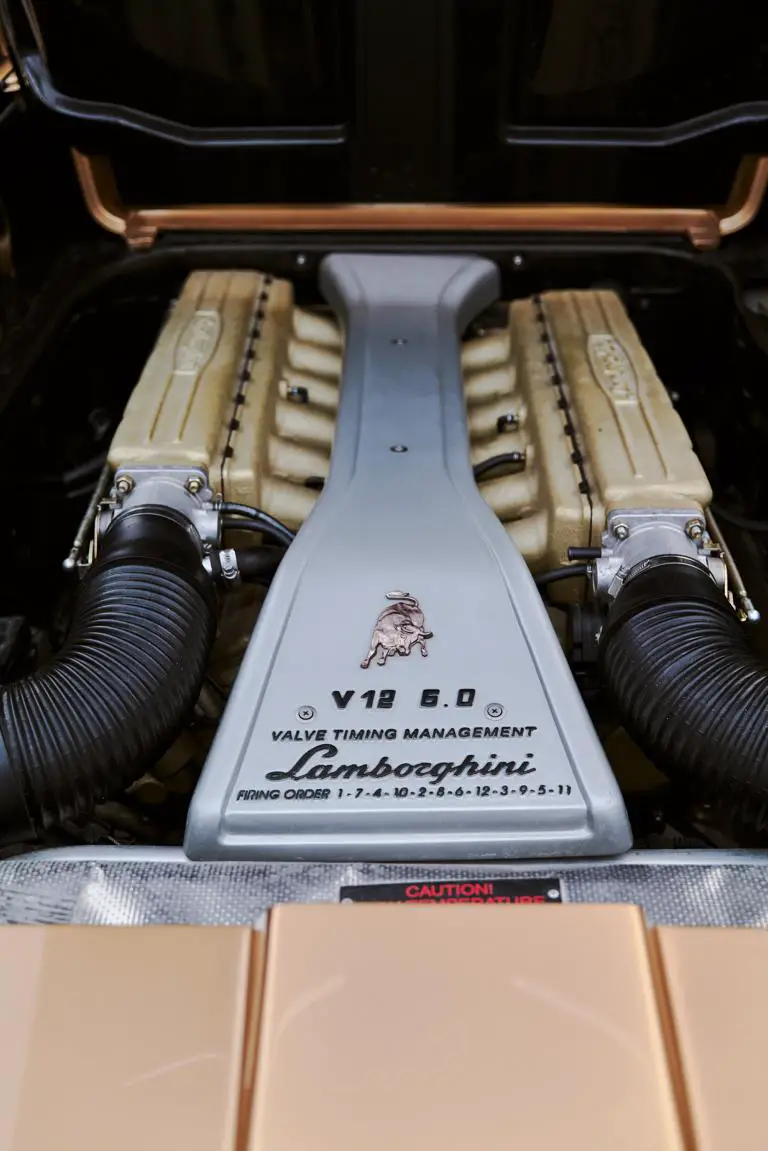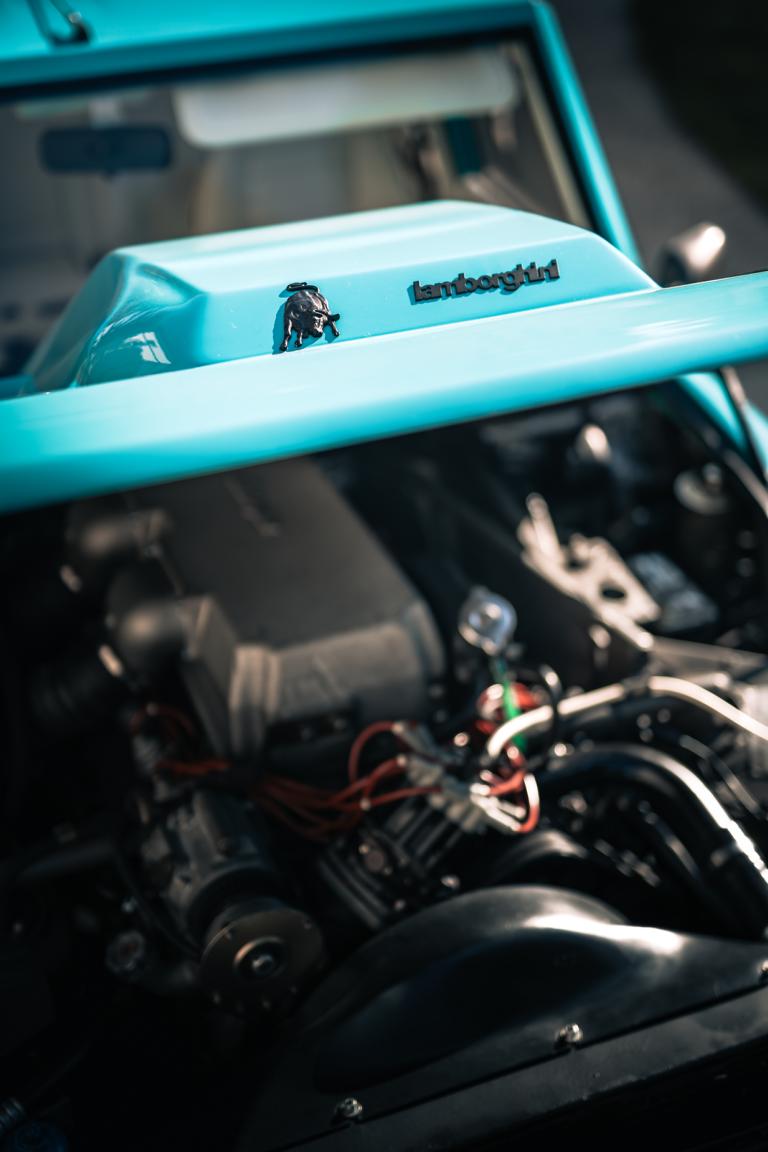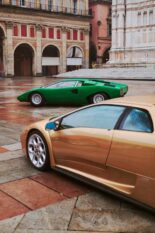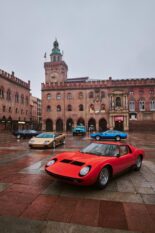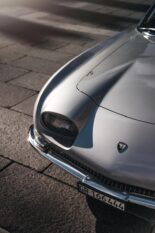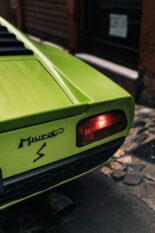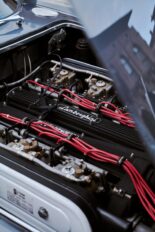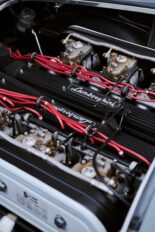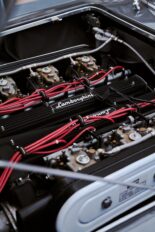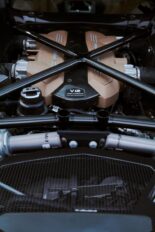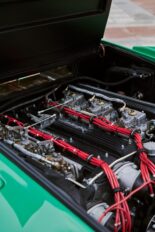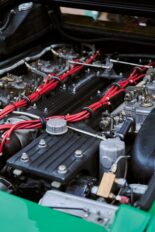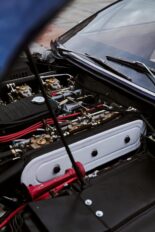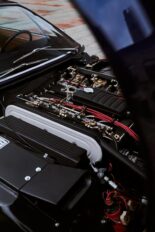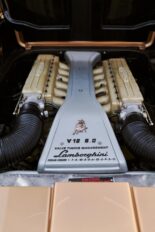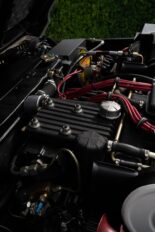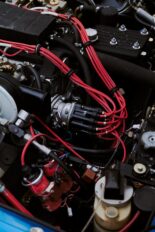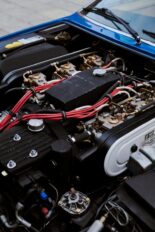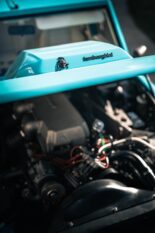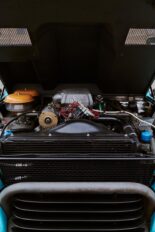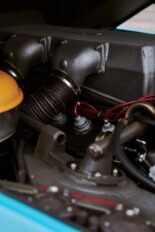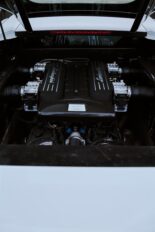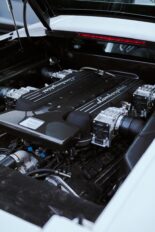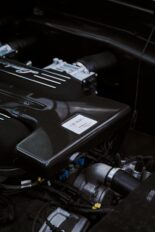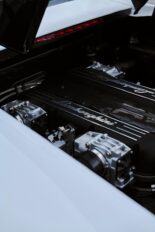The naturally aspirated V12 engine has been at the heart of Lamborghini's most prestigious model ranges since 1963. In fact, only two versions of the super sports car have been produced to date. The first engine, effectively a racing engine, was designed by Giotto Bizzarrini. It made its debut in the first Lamborghini, the 350 GT, after being tuned more 'civilian' for road use. The second engine was a completely new design, keeping the technical concepts unchanged, and was introduced in the Aventador, which was launched in 2011. It represented a major technological leap forward for the company and set new standards in terms of performance and reliability.
before hybridization
Of course, the first engine was modified and developed several times over its lifetime to increase performance and later significantly reduce fuel consumption and emissions. Between 1963 and 2010 it was installed in every imaginable way: first as a front engine in the 350 GT, 400 GT and Espada. During development, aluminum was used for the cylinder heads, crankcase and pistons to reduce its weight to 232 kilograms. It was then installed in the Miura as a mid-engine rotated 90 degrees in the transverse direction. Later, starting with the Countach, it was rotated another 90 degrees to a longitudinal position in the rear to improve weight distribution.
As the engine size increased from 3,5 liters in the 350 GT to 6,5 liters in the Murciélago, it became increasingly important to reduce the weight of the engine. New materials for the engine components made it possible to reduce the weight, while newly introduced technologies enabled a lower installation position in the chassis. Eventually, when Audi took over Lamborghini, reliability and ease of maintenance became just as important as exhaust emissions and performance. Today, the V12 is at the heart of the Lamborghini Aventador and the Essenza SCV12, the track car, in which it produces 830 hp.
The beginning of a legendary legacy
From the very beginning, and especially since it was installed in Lamborghinis, the V12 engine has been considered the finest and most prestigious engine of all. Bizzarrini created a V12 that would give the company the opportunity to enter the world of racing. Instead, Ferruccio Lamborghini decided to use it as the production engine for his new model. Thus began a love affair that continues to this day.
"The Lamborghini story begins with the V12", explains Maurizio Reggiani, former Chief Technical Officer of Lamborghini. "In the 60s, the V12 was clearly the pinnacle of technology, luxury and sportiness for any vehicle."
After the 350 GT and its derivatives such as the Espada, the V12 was installed in the Miura in 1965, in the Countach in 1971 and in the Diablo in 1990, before finally finding a home in the Murciélago. This engine showed all its versatility when it was installed in 1986 in the LM 002, Lamborghini's first super SUV. At that time, it already had a displacement of up to 5,2 liters. A special, unique version of the LM 002 was also built, with a 7,2-litre, 12hp V700 engine normally found on offshore racing boats.
Radical rethinking
Thanks to the double overhead camshaft for each cylinder bank, which was used for the first time in engines for production vehicles, the V-angle of the engine could be widened and the center of gravity lowered. A transversely mounted mid-engine was chosen for the Miura in order to achieve better weight distribution and shorten the vehicle's wheelbase. The transmission and differential case were integrated into the powertrain, which helped make the overall design of this iconic supercar more compact.
Weight distribution is crucial
To further improve weight distribution compared to the Miura, designers used the same engine for the Countach, albeit in a different configuration. They moved it to the middle position and turned it another 90 degrees, which is 180 degrees compared to the first 350 GT. In this way, the gearbox was mounted in front of the engine, practically "in the cockpit". In its last version, the displacement of the Countach had increased to 5,2 litres. With the 1986 model year, the V12 engine of the Countach was also homologated for the American market. This milestone was achieved through the use of electronic fuel injection, which replaced carburetors in markets with more stringent environmental regulations.
"Due to the larger displacement, the engine was longer and thus the center of gravity was shifted towards the rear of the vehicle", explains Reggiani. “It made it harder to drive and oversteered more. The layout was revolutionized and the engine was used to shift the car's center of gravity. In fact, the Countach engine is the first of a generation of engines that still exist today in terms of the layout and position of the powertrain in the vehicle.”
Meeting the needs of all-wheel drive
In 1985, development of the V12 began in preparation for its use in the new Diablo supercar. This made its debut in 1990 with a displacement increased to 5,7 liters and an output of 492 hp at 6800 rpm. In its VT version, presented in 1993, the Diablo was the first Lamborghini supercar that was also available as an all-wheel drive version. The Diablo SV-R, on the other hand, was developed for use in the Super Sport Trophy, which debuted as a support race at the 24 1996 Hours of Le Mans. 32 Diablo SV-Rs took part in Lamborghini's largest racing program to date before the Super Trofeo was launched in 2009.
The 1998 Diablo GT was effectively the first Diablo model to feature the styling cues of the second generation, released in 1999. It brought other important technical improvements to the engine. Of particular note is the introduction of an individual throttle body for each cylinder, a decision dictated by a desire to improve throttle response. This change was not only significant, but also forward-looking: similar technology will be used in the new Huracán GT3, which will compete in 2023.
New challenges with the introduction of the Murciélago
When Audi acquired a majority stake in Lamborghini, a period of profound change began. "Happily", says Reggiani, “The new owners were aware of the need for Lamborghini to maintain its identity and exclusivity. This allowed us to create a relationship between Audi and Lamborghini that set boundaries but also respected needs. From the start, Audi understood what it could and couldn't ask of Lamborghini.
The balance thus created allowed both companies to improve by emphasizing their differences. Lamborghini's distinctiveness, recognized both by shareholders and by the Group's other brands, has been one of the keys to our success. What we were able to demonstrate with the development of the V12 gave us the confidence that enabled us to refine the V10 that debuted in the Gallardo. In addition, we were able to develop all our other products in an unmistakably Lamborghini-typical way.”
Under the new ownership, a different approach was taken to the development of the V12. The focus shifted from achieving high performance to volumetric efficiency to meet increasingly stringent regulations. An example of this is the Murciélago, launched in 2001 with a 6,2-liter V12 engine that produced 580 hp. In 2007, the displacement was increased to 6,5 liters, which enabled an impressive power output of 670 hp. In addition, the vehicle was 100 kilograms lighter and the engine, which was revised in several parts, was equipped with dry sump lubrication with oil circulation via return pumps. This allowed Lamborghini to reduce the distance between the crankshaft and the underbody of the car, improving drivability.
The development of the Murciélago engine allowed Lamborghini to find its own place in the world of Audi. But it was the decision to create a new V45 from scratch after 12 years that allowed Lamborghini developers to set new goals and explore new opportunities.
A blank sheet of paper for the Aventador
"When you design an engine from scratch, you have to take into account from the beginning the constraints that you have to be able to respect in every application and from every point of view", explains Reggiani. “In a way, the Aventador was the dress rehearsal for Lamborghini. We had to use it to prove that we could deliver power, weight and performance, but also guarantee the reliability required by the group. The result speaks for itself: we sold around twice as many vehicles as initially forecast – a good indicator of the success of the Aventador. Despite the modifications and improvements that have been made over the years, from an engineering perspective the engine is still the same.”
“When we started working on the Murciélago, we had 6,2 liter engines and an average power between 620 and 640 hp. With the Aventador, we already entered the race with 6,5 liters and 700 hp. We knew that performance would need to increase by at least 5 percent over the expected lifetime of the model, which presented a major challenge. We also had to take into account the Euro XNUMX emission standard and the fact that in this first project of a new Lamborghini engine under the Audi umbrella we had to meet all the requirements imposed by the group.”
The Aventador engine was introduced in 2011 and had a displacement of 6,5 liters and produced 690 hp at 8250 rpm. It was modified in 2013 for the LP 700-4, 2015 for the LP 750-4 and 2016 for the Superveloce. With the release of the SVJ in 2019, engine power was boosted to 759 hp and in the 2021 Ultimae, the last street-legal Aventador, to 780 hp. The same engine powers the Essenza, a track-only vehicle that is not subject to street-legal restrictions. It produces 830 hp and is a true work of art of modern technology. "The highest expression of our V12 has been reached with the Essenza SCV12, in which the same engine is capable of producing 830 hp of power," says Reggiani. “The engine is the same, but because there are no filters and no noise regulations, the exhaust back pressure is lower. The pressure loss of the intake filter is also lower, which means that the volumetric efficiency is higher. From an engineering point of view, the success of the V12 proves that a good engine can offer unique emotions and performance right from the start. Its potential is evident in the thermodynamics and the mechanical components.”
The Aventador was the last Lamborghini to be powered by a purely naturally aspirated V12 before moving into the next chapter with the hybrid in Q2023 XNUMX.
Fuel consumption and emission values of the Aventador LP 780-4 Ultimae; Combined fuel consumption and emissions: 18 l/100 km (WLTP); 19,7 l/100km (NEDC), combined CO2 emissions: 442 g/km (WLTP); 447 g/km (NEDC)
Of course, that wasn't the end of it!
tuningblog has countless other articles on the subject of car and auto tuning in stock. Do you want to see them all? Just click HERE and look around. In part, we would like to provide you with news but also off the tuning. In our category Tips, products, information & Co We have reviews of car or accessories manufacturers, new ones Tuning Wiki Terms or one or the other Leak veröffentlicht. Just click on one of the following posts!
other related posts
|
Current developments in the automotive market: E-SUVs are particularly popular! |
 tuningblog.eu Your magazine about tuning the car
tuningblog.eu Your magazine about tuning the car
